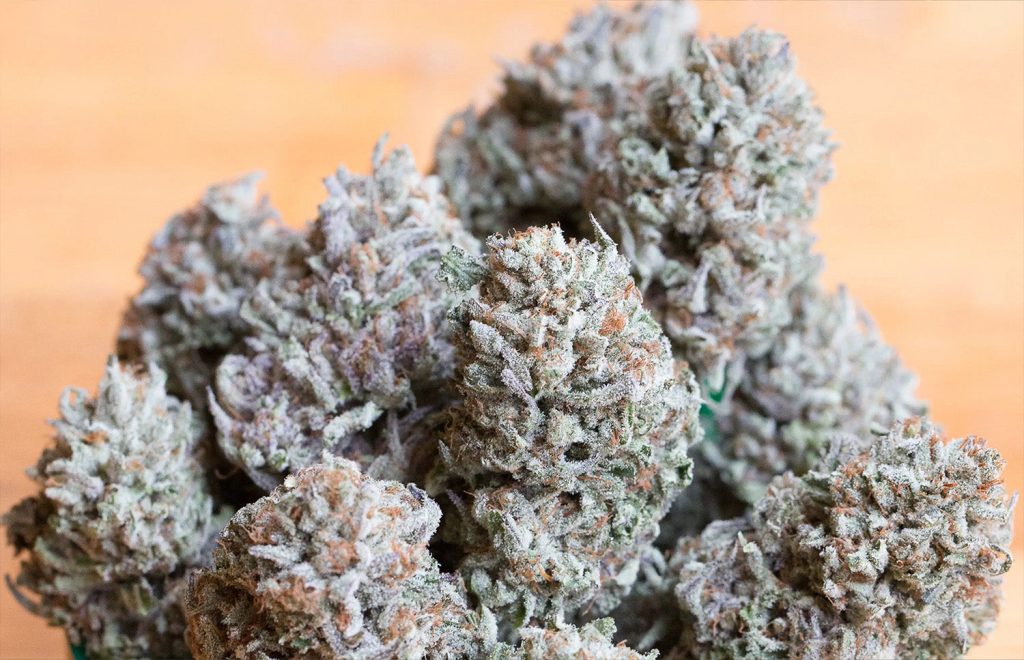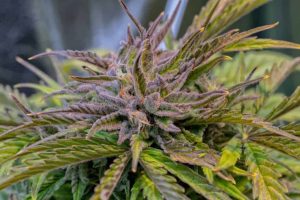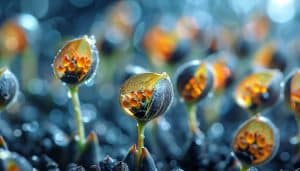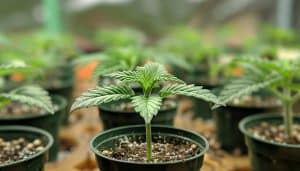- The terpenes present in the cannabis plant are directly responsible for the aroma and flavor of the flowers you consume. In addition, several recent scientific studies demonstrate that the latter also play a complementary symbiotic role with the different phytocannabinoids contained in the plant, particularly in terms of effect.
- Some fairly recent scientific studies are gradually demonstrating that these chemical compounds also have health benefits in humans.
- In this article, we bring you everything you need to know about the importance of the presence and influence of different cannabis terpenes.
What are cannabis terpenes?
This is a subject that currently raises many questions within the international cannabis scene, with a certain relevance. From a chemist’s point of view, cannabis terpenes are simply composed of a molecular repeat chain named 5 carbon isoprene. This molecular profile acts directly on the aromatic properties And taste of all the plants that produce it. But not only that, because it has recently been discovered that terpenes are capable of generating beneficial symbiotic interactions with the phytocannabinoids present in the cannabis plant.
We can discuss here the phenomenon “entourage effect”, as has already been observed in the context of the analysis of a multitude of varieties with diverse and varied cannabinoid profiles. Nowadays, the antagonism of CBD on the THC is something that has been clearly demonstrated in a formal scientific manner. More clearly, this means that if a variety of cannabis contains both THC and CBD, even in unequal proportions, the CBD has the ability to cancel the effects produced by the THC. It seems incredible, and yet it is a fact.
All this to make you understand that according to the profile of phytocannabinoids And terpenes contained by any cannabis plant, THE scent, THE taste like the effects will be oriented according to their composition. All this generates interactive mechanisms between these different elements, which make it possible to obtain strong variations concerning the properties mentioned. It is concretely this great diversity, which offers us multiple possibilities and whose different virtues are still to be discovered.
We are talking here about hemp or cannabis terpenes, but in reality, we can find these same terpenes in many food intended for humans, and particularly in fruits, THE vegetables, THE spices and the aromatic herbs.
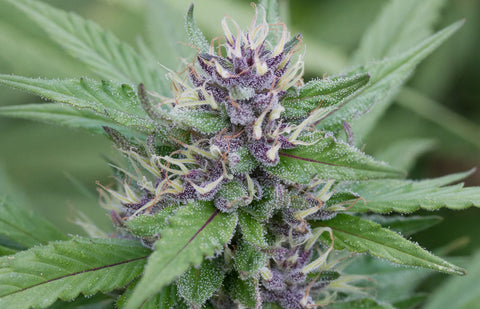
What are the real properties of terpenes?
For many years, a multitude of exhaustive scientific studies have been carried out in order to discover the effects and properties of different phytocannabinoids (especially for the THC and the CBD) of our favorite plant. However, many mysteries remain regarding the terpenes. Here too, a certain number of rigorous investigations have been carried out, however the scientific evidence collected remains insufficient to be able to draw formal conclusions concerning the beneficial properties or benefits of terpenes.
Some of these studies confirm that terpenes actively contribute to “the entourage effect” mentioned a little above. Which concretely means that they reinforce or amplify the action of the benefits which are directly produced by the different cannabinoids present in the plant. This is how the neuroscientist Ethan Russo, demonstrated through a study that terpenes could reduce the adverse effects of THC, at the same time increasing its therapeutic effectiveness. Russo comes to the conclusion that this close relationship between cannabinoids and the terpenes, significantly increases the therapeutic power of cannabis in the face of different pathologies.
As we have known for some time now, all cannabinoids act directly on the receptors of endocannabinoid system present in our body. It seems that the same is true for terpenes, we can even say that the latter could play the role of amplifiers depending on the composition of active ingredients contained in the plant.
We therefore gradually realize the evidence of the virtues or therapeutic properties that each terpene potentially contains, such as anti-inflammatory benefits to reduce pain for example. We see concretely that these molecules present in hemp are responsible for the nature and expression of different perfumes, as well as the aroma and taste of the vast majority of our foods, but above all they ultimately have an important role in the health of our body. It also seems logical that they actively participate in the benefits provided by aromatherapy.
It would even appear that certain terpenes are capable of modifying the quantity of THC passing through the blood-brain barrier (a part that separates the brain from the blood, to prevent potentially harmful substances from reaching the brain). This is concretely how terpenes act on the effect of cannabis on the human body. Other parallel studies claim that these same compounds could also act on our internal production of dopamine and of serotonin.
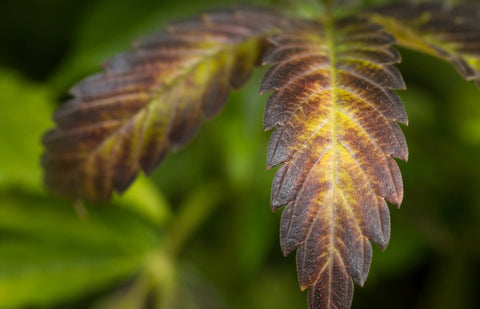
The effects produced by a terpene are variable, such as, for example, myrcene which can produce a relaxing effect And narcotic, THE limonene improves mental acuity and the concentration. Fairly recent studies mention that the terpene β-Caryophyllene would have neuroprotective properties which can contribute beneficially to the treatment of neurodegenerative diseases such as Parkinson disease.
Although there are still some questions, terpenes could be at the origin of an important therapeutic value, by acting in complementarity with the different phytocannabinoids present in the cannabis plant. Ultimately, the complexity remains precisely on this point, because there are so many possible combinations in terms of the availability or presence of different cannabinoids and terpenes, as well as the proportion of each of these elements at the same time. This is why it is necessary to continue numerous investigations in this direction, in order to discover new concrete therapeutic possibilities certified by the medical profession.
-It exists 3 major categories to classify the phytoterpenes :
1) Primary monoterpenes : they are composed of 2 units of isoprene, in other words, two blocks of 5 units. The best known monoterpenes are myrcene, alfa-pinene (has-pinene), THE limonene, THE beta-caryophyllene (β-caryopphyllene), THE terpinolene And the ocimene.
2) Secondary terpenes Or sesquiterpenes : they are composed of 15 carbon atoms. THE sesquiterpenes that are most often found in cannabis are the Hull (delta-3-hull), caryophyllene oxide, THE fenchol, humulene, THE linalool, eucalyptol, bisabolol, THE nerolidol (Or Peruviol), alpha-phellandrene (has-phellandrene), the camphene, THE beta-pinene (β-pinene), thealpha, beta And Y-terpinene (a- β-Y-terpinene), THE farnesene or even the terpineol.
3) Tertiary terpenes or those that we find in small quantities in the cannabis plant are: borneol, THE guaiol, THE cedrene, THE camphor, THE phytol, acetate of geranyl, THE pulegone, THE cymene And isopulegol (menthyl acetate).
What is the role of terpenes for the cannabis plant?
The production of terpenes in a cannabis plant is always concentrated at the level of flowers of the latter. Which makes perfect sense, because flowers are sort of “the precious fruits” of the plant. THE terpenes, in addition to phytocannabinoids which are also located and produced in the same place, i.e. inside the glandular trichomes, have a protective function against potential threats coming from bacteria, of mushrooms, insects or many other environmental stressors.

Both the concentration and composition of the terpene profile expressed by each plant vary greatly, depending on the genetics cultivated and the associated cultivation parameters. In addition to their repulsive action against the various scourges mentioned previously, terpenes are also used to attract pollinating insects, thus facilitating the reproduction of the plant world. For the same genetics, there are different factors that can cause certain variations during the production of these compounds such as: the climate, the length of the ripening period, fertilizers, the substrate and also the time of day during which the harvest is carried out.
All this lets us understand that the terpene composition of a plant is almost unique, depending on the observation of these different variations. However, the aromatic profile of a set of plants from an identical variety demonstrates strong similarities and therefore allows the concrete identification of the cultivated variety. This gives us such a result, because the terpene combination between parents of the same genetics is strongly marked, like a characterized olfactory imprint. This is the reason why we can easily distinguish a Amnesia Lemon of a L.A. Vanilla Cake, For example.
Terpenes and cannabinoids: a fusional relationship
Many people are convinced that terpenes are directly involved in the production process of cannabinoids, considering that the latter are made up of blocks of terpenes and groups of phenols.
A correlation between the level of terpenes and cannabinoids would have been found, during a study carried out using standard culture conditions. This could explain the strong presence of monoterpenes, as sesquiterpenes which form and are stored inside the glandular trichomes in which the cannabinoids are produced.
How to obtain essential oils from cannabis?
We can obtain cannabis essential oil using a method of traditional steam distillation. The latter passes through the plant matter, carrying away the essential oil of the plant because terpenes are soluble in water, unlike terpenes. cannabinoids.
This is the reason why when distilling cannabis, removing only the terpenes, the essential oil finally obtained will not produce any psychoactive effect.
The protocol is quite simple, because you just have to place the cannabis in a test tube with water, and then heat it so that the water turns into vapor at a temperature of 100°C. In this way, the terpenes are captured and then transported by steam to a second glass test tube, in which it will be cooled and liquefy again. In the liquid state, the essential oil collected and containing the terpenes floats above the water, thus facilitating the separation of the two liquids.
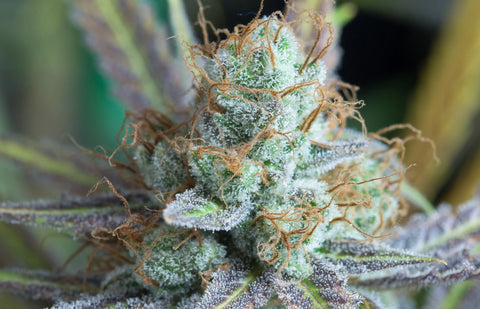
It is necessary to know that you need to have a large quantity of cannabis flowers, in order to finally obtain a fairly modest quantity of essential oil. This can explain his high cost like that low availability on the market.
What are the different applications of cannabis essential oil?
Cannabis essential oil can be used for:
- Aromatherapy or as part of the development of various and varied cosmetic products (creams, lotions, soaps, massage oils, etc.)
- Improving aromatic qualities, taste, in also optimizing the “entourage effect” of your cannabis flowers and extractions
- The development of various edible products (drinks and food)
The various possibilities mentioned here are certainly still largely underestimated. The cannabis plant still retains many secrets to this day, we will certainly discover new virtuous uses of cannabis essential oil in the near future.
